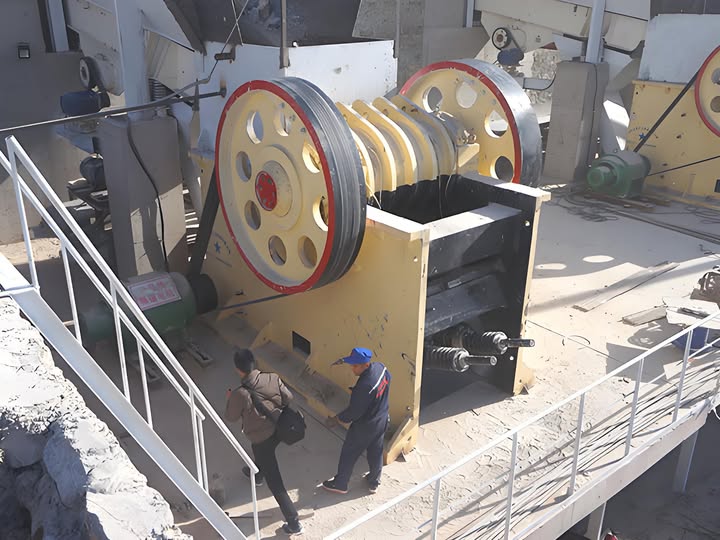Which Crusher to Use for Manufactured Sand Production? A Complete Guide
With natural river sand becoming scarce and environmental regulations tightening, manufactured sand has emerged as a high-quality, sustainable alternative for the construction industry. However, producing manufactured sand that meets the strict standards for concrete and asphalt requires more than just crushing rock—it requires the right sequence of machines. The question isn’t which single crusher to use, but rather which combination of crushers is essential.
This guide will walk you through the complete manufactured sand production process and explain the specific role of each machine, focusing on the most critical one.
The Multi-Stage Crushing Process
Producing quality sand from hard rock is a multi-stage process that typically involves three distinct types of crushers, each with a specialized role.
- Stage 1: The Primary Crusher (Jaw Crusher) Before any rock can become sand, it must be broken down from large boulders. The jaw crusher is the industry standard for this task. As a primary crusher, it accepts raw feed from the quarry face and uses a powerful compression force to reduce the material to a more manageable size, preparing it for the next stages of crushing.
- Stage 2: The Secondary Crusher (Cone or Impact Crusher) The output from the jaw crusher is still too large for direct sand production. The next step is to further reduce the material size. For hard, abrasive materials like granite, a cone crusher is the preferred choice. For softer or less abrasive materials, an impact crusher may be used. These crushers reduce the rock to the ideal feed size for the final stage.
The Key to Quality: The VSI Crusher
While the jaw and cone crushers are essential for size reduction, the quality of the final sand product is determined by one machine: the VSI crusher, or Vertical Shaft Impactor. Often referred to as a “sand making machine,” the VSI is the critical third stage in the process.
- How it Works: Unlike jaw or cone crushers that use compression, the VSI crusher uses a high-speed rotor to hurl rock against a stationary anvil ring or a bed of material. This “rock-on-rock” or “rock-on-anvil” impact action is the most effective method for producing fine, cubical particles.
- Why It’s Essential for Sand:
- Ideal Product Shape: The repeated, high-velocity impact within the VSI crusher results in a highly cubical and well-graded product. This cubical shape is a key requirement for high-quality manufactured sand used in concrete, as it improves workability, reduces voids, and creates a stronger final product.
- Superior Gradation: The VSI provides precise control over the final product’s size distribution, allowing producers to meet the exact specifications required by different construction applications.
- High Efficiency: The VSI operates at a very high speed, leading to a high throughput and efficient processing of the crushed aggregate into sand.
The Complete Sand Production Line
A complete line for manufactured sand production typically follows this sequence:
- Raw Quarry Material is fed into a Jaw Crusher.
- The output is transferred to a Cone Crusher.
- The final aggregate feed is sent to the VSI Crusher for the production of sand.
- The finished material is then sent to a screening plant for final classification into various grades.
Conclusion
While every crusher in the lineup plays an important role, the VSI crusher is undeniably the most crucial piece of equipment for producing high-quality manufactured sand. Its unique ability to create a perfectly shaped, uniform, and well-graded product is what separates high-quality sand from simple crushed fines. Therefore, when building a sand production plant, the choice of a VSI crusher is the most critical decision for ensuring the quality, efficiency, and profitability of your operation.
- > Jaw Crusher Troubleshooting: Common Faults and Effective Solutions
- > Wheeled vs. Tracked Mobile Crushers: Which is Best for Soft Soil Mining Areas?
- > The Role of Vibrating Screens in Iron Ore Washing: Enhancing Efficiency in Ore Processing
- > High-Performance Jaw Crushers for Stone Production Lines
- > Utilization of Impact Crushers for Processing Limestone, Cement, and Gypsum
- > The Role of Vibrating Screens in the Mining Industry
- > The Role of Impact Crushers in Iron Ore Mining Operations
- > Impact Crusher for Quartz Sand Processing
Hot Product


Online




Message

